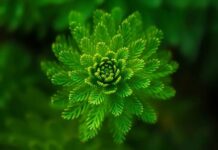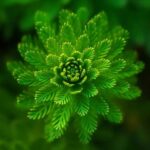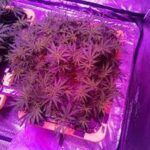What Color LED Is Best For Plants?
There is no definitive answer when it comes to what color LED light is best for plants. Each plant species has different requirements in terms of the wavelength and intensity of light that they need to thrive. However, some general tips that can be followed when choosing LEDs for plant growth include:
-Using a full spectrum LED light source which emits a wide range of wavelengths including both visible and invisible light. This will provide your plants with the most complete light spectrum possible and allow them to photosynthesize more effectively.
-Choosing an LED with a higher color rendering index (CRI) rating. This indicates that the LED will produce light that is closer to natural sunlight, which is ideal for plant growth.
-Picking an LED with a high-lumen output. This means that the LED will be brighter and will provide your plants with more light, which is essential for photosynthesis.
-Select an LED with lower power consumption. This is important not only for saving energy but also for preventing heat buildup around the plants, which can be damaging.
Ultimately, the best way to figure out which LED light is best for your plants is to experiment and see what works best for them. Different plant species will respond differently to different types of light, so it’s important to find what works best for your particular plants. Once you’ve found the perfect LED light for your plants, you’ll be able to enjoy healthy and vibrant growth!
What color LED is best for flowering?
Table of Contents
The best color LED for flowering is typically a full spectrum LED light source. This type of LED emits a wide range of wavelengths, including both visible and invisible light. This provides plants with the most complete light spectrum possible and allows them to photosynthesize more effectively.
Full-spectrum LEDs are also often rated higher in terms of color rendering index (CRI), which means that they produce light that is closer to natural sunlight. This is ideal for plant growth. Additionally, full-spectrum LEDs typically have a high lumen output, which means that they are brighter and will provide plants with more light. They may also have lower power consumption, which is important for saving energy and preventing heat buildup around plants.
Does blue light make plants grow faster?
Blue light does not necessarily make plants grow faster, but it is essential for plant growth. Blue light is a type of visible light that is scattered more than other colors because it travels as shorter, smaller waves. This means that blue light penetrates the leaves of plants more deeply than other colors, reaching the chloroplasts where photosynthesis occurs.
Chloroplasts are organelles in plant cells that are responsible for converting light into chemical energy that plants can use for growth. They contain a pigment called chlorophyll, which absorbs blue light and uses it to create this chemical energy. So, while blue light doesn’t directly make plants grow faster, it is necessary for the process of photosynthesis that ultimately fuels plant growth.
Will LED lights help plants grow?
LED lights can help plants grow by providing the light that they need for photosynthesis. Photosynthesis is the process that plants use to convert light into chemical energy that they can use for growth.
Chloroplasts are organelles in plant cells that are responsible for converting light into chemical energy. They contain a pigment called chlorophyll, which absorbs light and uses it to create this chemical energy.
What color should my LED lights be?
The color of LED lights is not as important as the intensity and spectrum of the light. However, full-spectrum LEDs that emit a wide range of wavelengths, including both visible and invisible light, will provide plants with the most complete light spectrum possible and allow them to photosynthesize more effectively.
Additionally, LEDs with a higher color rendering index (CRI) rating will produce light that is closer to natural sunlight, which is ideal for plant growth. LEDs with a high lumen output will also be brighter and will provide plants with more light.
What LED color is best for crying?
The best color LED for plants is typically a full spectrum LED light source. This type of LED emits a wide range of wavelengths, including both visible and invisible light. This provides plants with the most complete light spectrum possible and allows them to photosynthesize more effectively.
Full-spectrum LEDs are also often rated higher in terms of color rendering index (CRI), which means that they produce light that is closer to natural sunlight. This is ideal for plant growth. Additionally, full-spectrum LEDs typically have a high lumen output, which means that they are brighter and will provide plants with more light.












